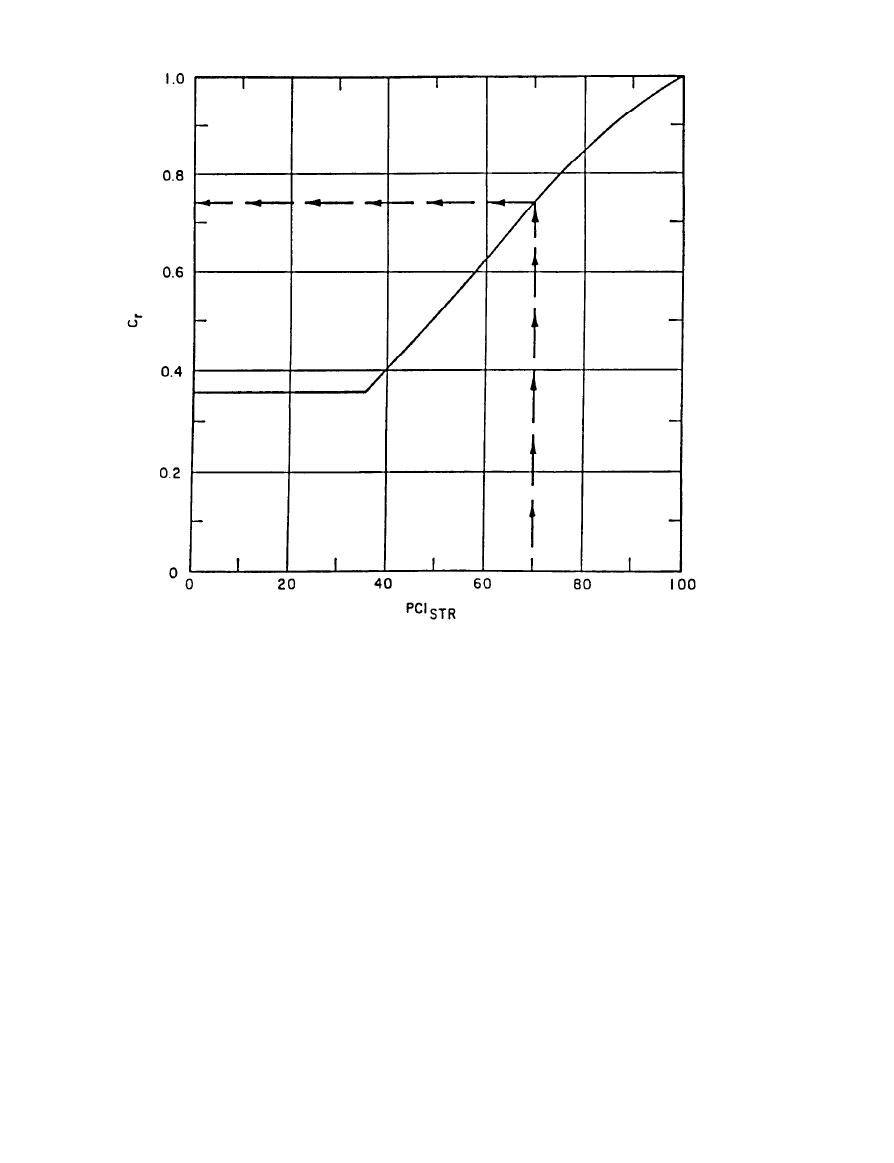
TM 5-822-13/AFJMAN 32-1018
(PCISTR COMPUTED FROM TRAFFIC LOAD DISTRESS ONLY)
hd = required single slab thickness above existing subgrade determined using the elastic layered method
with the design flexural strength of the overlay, inches
he = required single slab thickness above existing subgrade determined using the elastic layered method
with the measured flexural strength of the existing rigid pavement, inches
Cr = condition factor for plain concrete pavement and reinforced concrete pavement
For plain concrete pavement, Cr is assigned according to the following conditions:
Cr = 0.75 - Pavements exhibit initial cracking due to load but no progressive cracking or faulting of
joints or cracks.
Cr = 0.35 - Pavements exhibit progressive cracking due to load accompanied by spalling, raveling, or
faulting of cracks and joints.
For reinforced concrete pavement, Cr is assigned according to the following conditions:
Cr = 1.00 - Pavements are in good condition with little or no short-spaced transverse (1- to 2-foot)
cracks, no longitudinal cracking, and little spalling or raveling along cracks.
Cr = 0.75 - Pavements exhibit short-spaced transverse cracking but little or no interconnecting longi-
tudinal cracking due to load and only moderate spalling or raveling along cracks.
Cr = 0.35 - Pavements exhibit severe short-spaced transverse cracking and interconnecting longitudi-
nal cracking due to load, severe spalling along cracks, and initial punchout type failures.
An estimate of condition factor Cr may also be made using the structural condition index (SCI) of the existing
rigid pavement. The SCI is that part of the pavement condition index (PCI) related to structural distress types
or deduct values. The relationship is shown in TM 5-623. If PCI condition survey data are available, Cr can be
obtained from figure 8-1 using the structural PCI (PCI computed using only load related distresses).
8-2


 Previous Page
Previous Page
